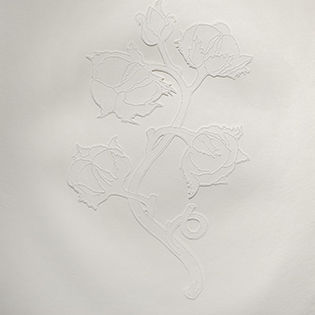Art, Environment, Empire
- Location
- Barber Lecture Theatre
- Dates
- Wednesday 25 October 2023 (16:15-17:30)

This event is organised by the Department Of Art History, Curating, And Visual Studies.
Speakers
- Dr Bharti Parmar (artist)
- Dr Amanda Sciampacone (Open University)
In this research seminar, Bharti Parmar and Amanda Sciampacone will present their practice and research that dovetails around the relationship between art and visual culture, the environment, and histories of empire. Both presentations will be followed by questions and discussion, and then refreshments.
This event is open to all – students and staff from the University Of Birmingham and members of the public. It is free but booking is required
Abstracts
Dr Bharti Parmar (artist): Cotton – material as political
Bharti will be speaking about her exhibition Khadi for the British Textile Biennial in 2021 and current research of John Gerard’s Of the Historie of Plants 1636. She will describe the process of conceiving and delivering a major exhibition and how fleeting themes may translate to concrete works of art.
Dr Amanda Sciampacone (Open University): Contagious Climates: Cholera, Medical Topography, and the Colonial Picturesque
The COVID-19 pandemic has drawn attention to the continued associations between epidemic disease and the bodies and spaces of the Other. Looking back at the nineteenth century, my presentation will explore how another pandemic, cholera, came to be racialised as an Indian disease. More than most illnesses of the period, cholera inspired deep fears in British society because of its apparent origins, the mysterious nature of its spread, and the symptoms it produced on the European body. Although cholera was known in Britain prior to the nineteenth century, British medics claimed that the epidemic form of the disease had emerged in 1817 in the town of Jessore in what they described as the putrid jungles of the Ganges Delta. From here, cholera seemingly spread through Asia and Europe, reaching England in 1831. Due to its apparent origin in India, British medics used the terms 'Asiatic cholera' and 'Indian cholera' to describe the new disease. With cholera's arrival, British medics were confronted with a disease of which they had little knowledge. In attempting to identify its cause, they turned to an exploration of the environmental conditions in which it appeared to spread. Images were used to give visual form to these investigations. As I will argue, illustrations of cholera's and India's environment revealed how the disease took shape in the British imagination as an Indian entity; however, with subsequent outbreaks of cholera in Britain in 1848-49, 1853-54, and 1866, these images also implied an uncomfortable affinity between the climates of the metropole and the subcontinent.
Speaker biographies
Dr Bharti Parmar is a UK artist and academic with a practice of 30 years whose focus is upon vernacular crafts and systems. She makes prints, archival installations, sculpture and embroidery. Her current research interests are cotton and Indian independence.
Parmar studied Fine Art Printmaking at the Royal College of Art and has a PhD in material culture studies. Her work is represented in numerous institutional collections such as the Pitt Rivers Museum, The Whitworth Gallery and the Government Art Collection. She has supported numerous institutions as a trustee including Midlands Arts Centre Birmingham, Meadow Arts, Coventry Biennial of Contemporary Art and has been an Artistic and Quality Assessor for Arts Council England. She is currently is co-editor of Colour, Vol. 4 of the Bloomsbury Encyclopedia of World Textiles, trustee for Arts&Heritage and serves on Arts Council England’s Museums Designation Panel.
- Web
- Insta @bharti.parmar.studio
- Facebook @bhartiparmar
- LinkedIn @bhartiparmar
Amanda Sciampacone is an art historian who explores the intersections between British art, visual culture, medicine, and the environment in the long nineteenth century. She received her PhD in History of Art from Birkbeck, University of London and held a Leverhulme Early Career Fellowship at the University of Warwick. She joined The Open University in 2021, having previously worked at Birkbeck, University of London, King's College London, the University of Warwick, and Queen Mary, University of London